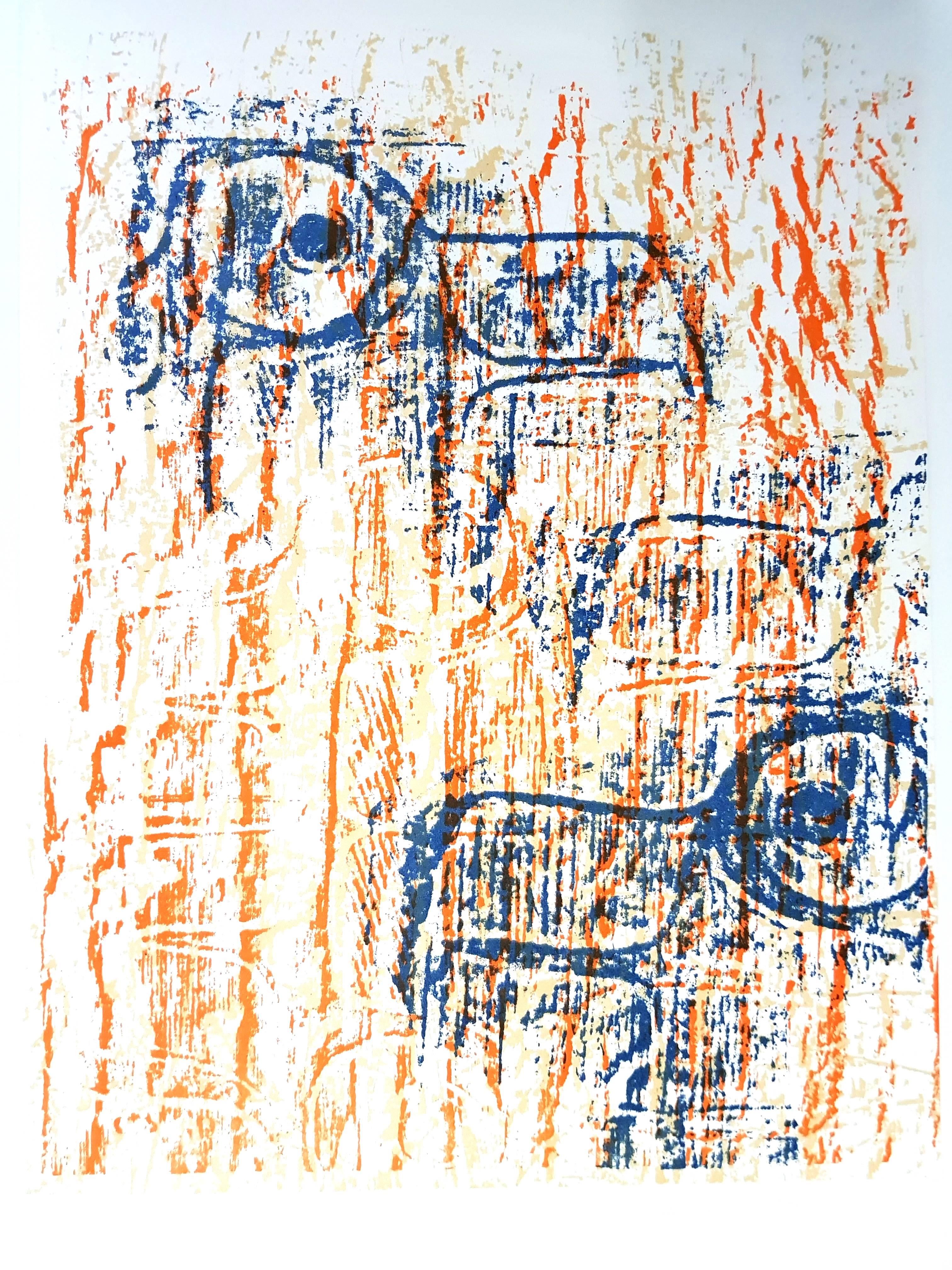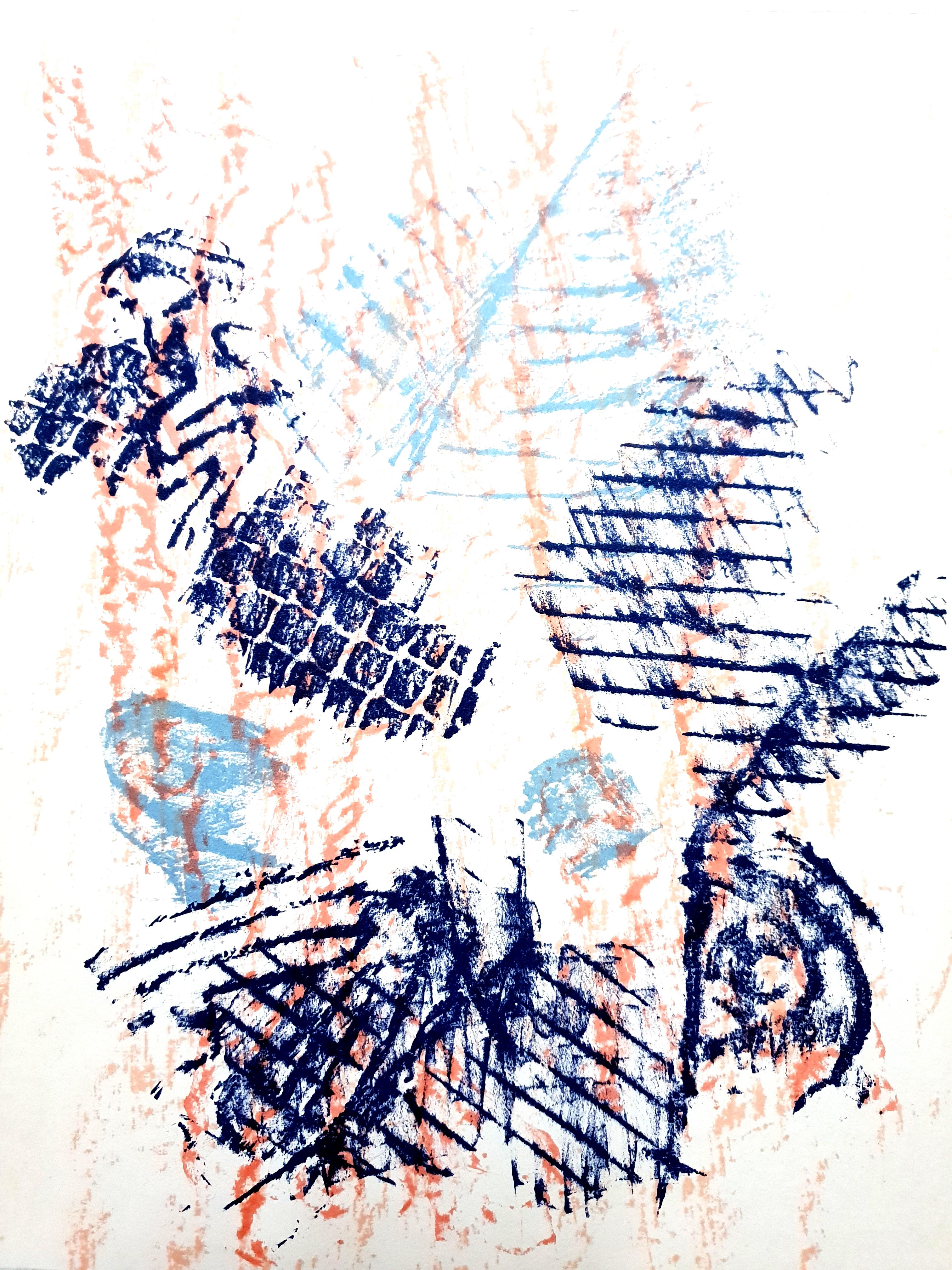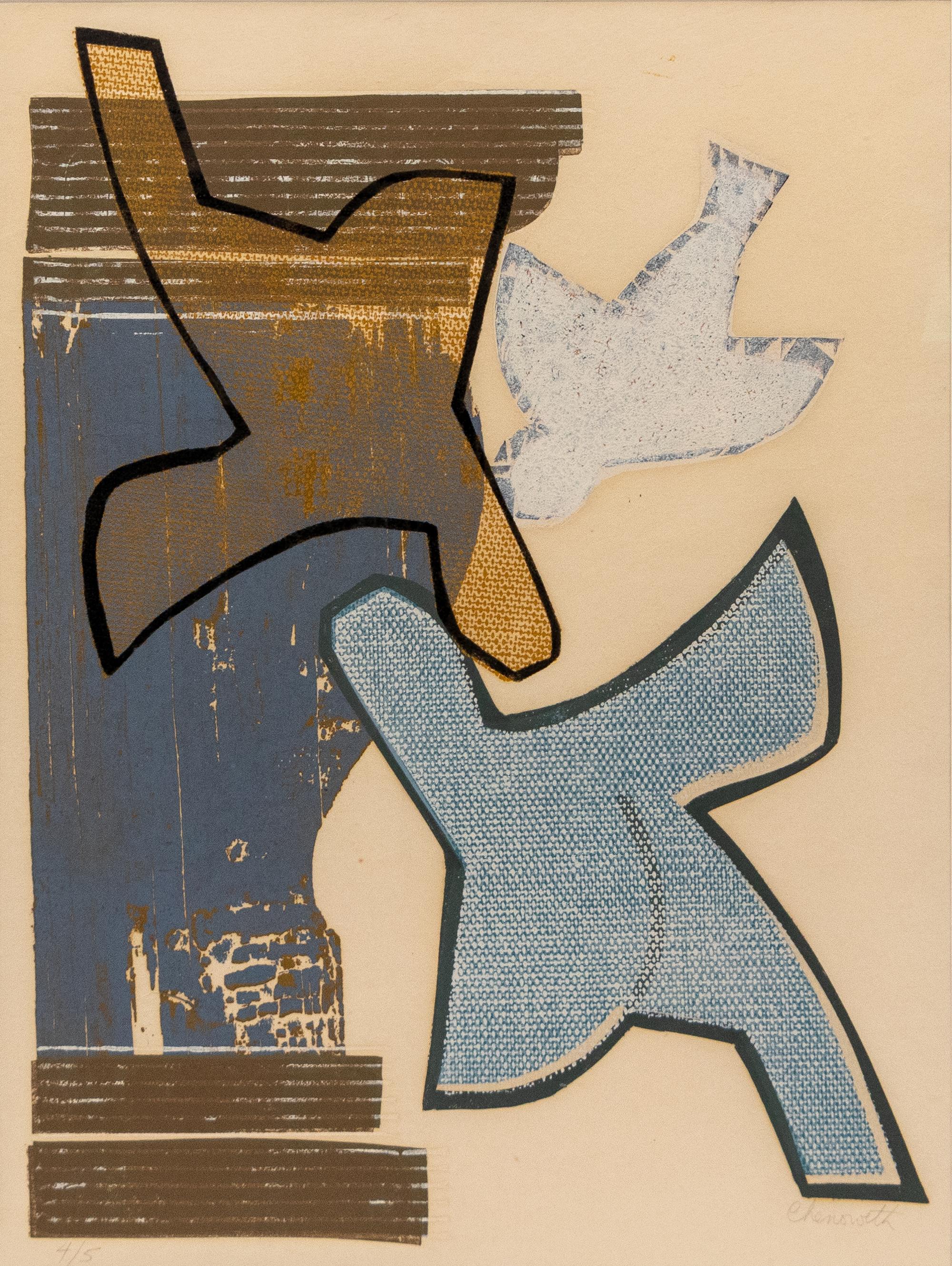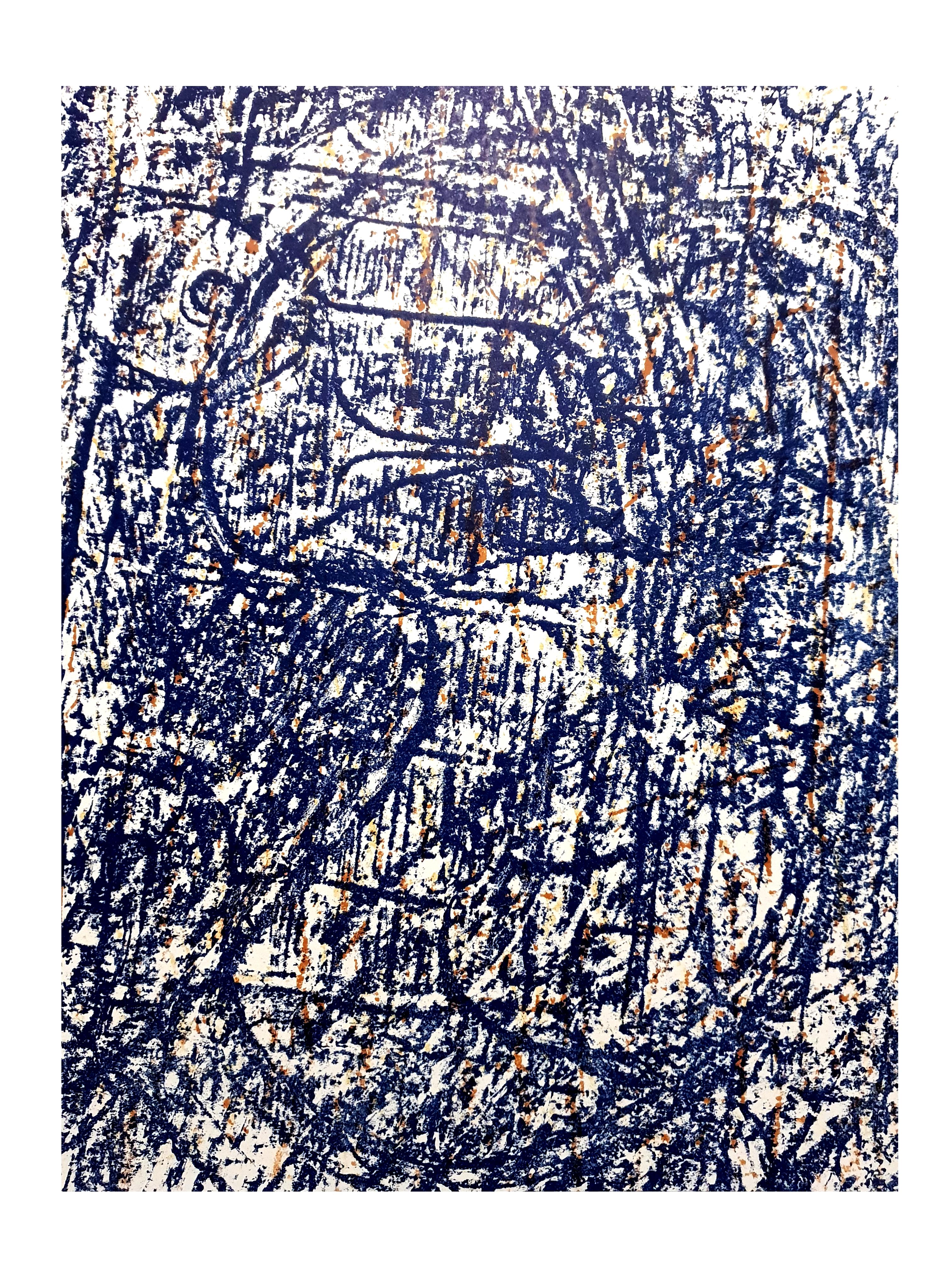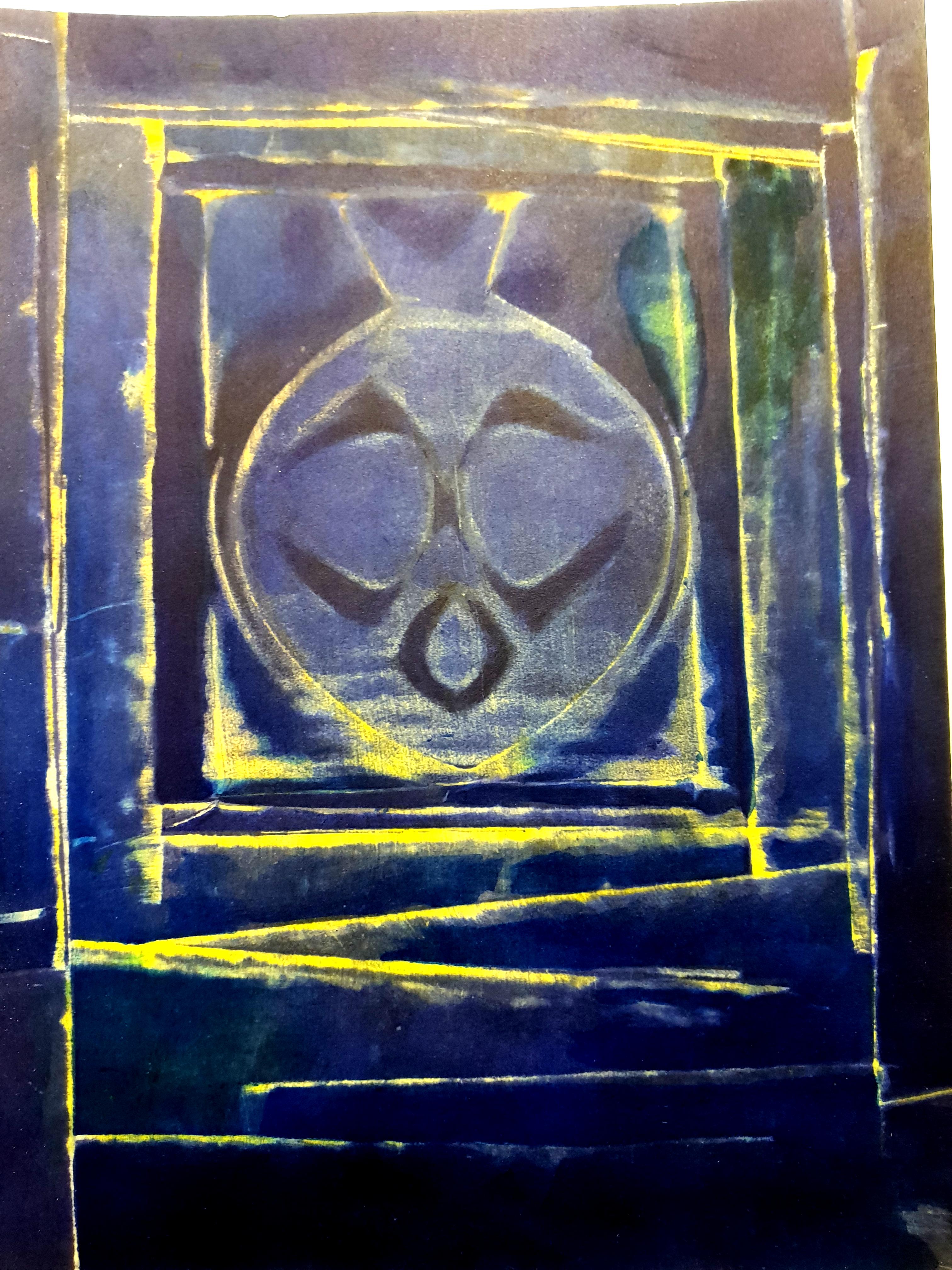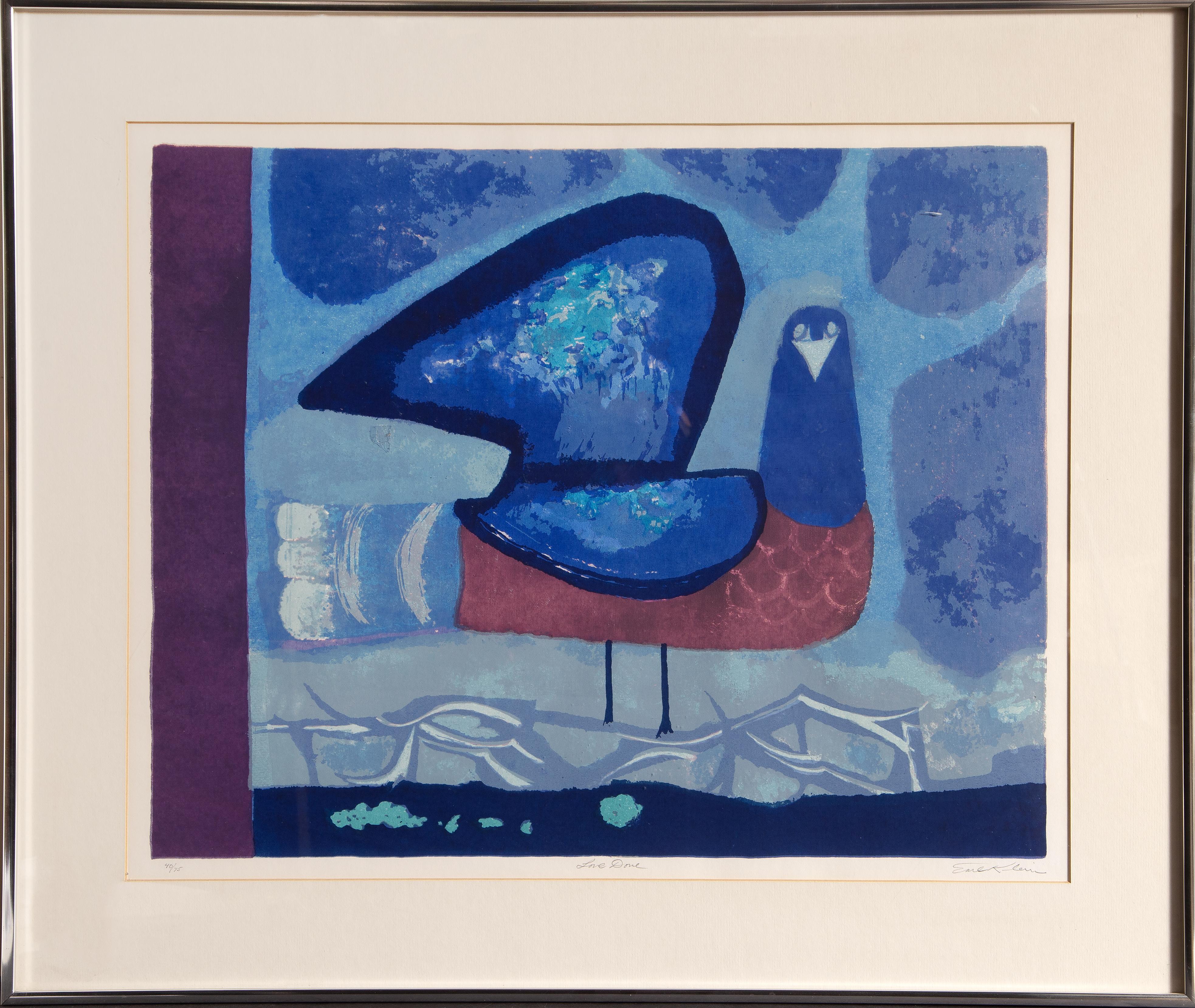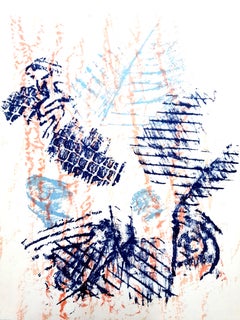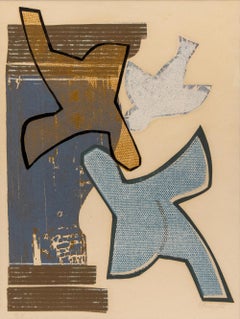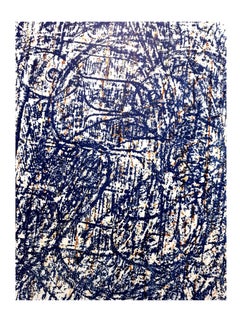Items Similar to Blue Bird, Squash - Lithograph and Stencil
Want more images or videos?
Request additional images or videos from the seller
1 of 11
Blue Bird, Squash - Lithograph and Stencil1964
1964
$823.53
£626.68
€700
CA$1,153.84
A$1,256.61
CHF 662.57
MX$15,284.04
NOK 8,331.77
SEK 7,814.52
DKK 5,331.64
About the Item
Paul KLEE (after)
Blue, Bird, Squash
Lithograph and stencil (Jacomet process)
Signed in the board
On vellum 50 x 38.2 cm (19.6 x 14.9 in)
INFORMATION : This lithograph was edited in 1964 by Galerie Berggruen in collaboration with Felix Klee, the son of the artist. The edition was limited to 500 copies.
Excellent condition
- Creation Year:1964
- Dimensions:Height: 19.69 in (50 cm)Width: 15.04 in (38.2 cm)
- Medium:
- Movement & Style:
- After:Paul Klee (1879-1940, German)
- Period:
- Condition:
- Gallery Location:Paris, FR
- Reference Number:1stDibs: LU464315606922
About the Seller
4.9
Platinum Seller
Premium sellers with a 4.7+ rating and 24-hour response times
Established in 2010
1stDibs seller since 2016
3,767 sales on 1stDibs
Typical response time: <1 hour
- ShippingRetrieving quote...Shipping from: Paris, France
- Return Policy
Authenticity Guarantee
In the unlikely event there’s an issue with an item’s authenticity, contact us within 1 year for a full refund. DetailsMoney-Back Guarantee
If your item is not as described, is damaged in transit, or does not arrive, contact us within 7 days for a full refund. Details24-Hour Cancellation
You have a 24-hour grace period in which to reconsider your purchase, with no questions asked.Vetted Professional Sellers
Our world-class sellers must adhere to strict standards for service and quality, maintaining the integrity of our listings.Price-Match Guarantee
If you find that a seller listed the same item for a lower price elsewhere, we’ll match it.Trusted Global Delivery
Our best-in-class carrier network provides specialized shipping options worldwide, including custom delivery.More From This Seller
View AllFeeding the Blue Bird - Original lithograph, Signed
Located in Paris, IDF
Jules Perahim (1914-2008)
Feeding the Blue Bird, 1974
Original lithograph
Signed in pencil by the artist
Numbered / 199
On Arches vellum 56 x 38 cm (c. 22 x 15 inches)
INFORMATION ...
Category
1970s Surrealist Figurative Prints
Materials
Lithograph
Birds - Original lithograph (Leppien/Spies #88)
By Max Ernst
Located in Paris, IDF
Max ERNST
Birds
Original lithograph, 1963
on vellum
33 x 25 cm
REFERENCES : Catalogue raisonné Leppien/Spies # 88
Excellent condition
Category
1960s Modern Animal Prints
Materials
Lithograph
Bird of the Moon - lithograph - 399 copies
By Georges Braque
Located in Paris, IDF
Georges BRAQUE
Bird of the Moon
Lithograph (Art-Litho workshop)
Printed signature in the plate
On Arches vellum 18 x 23"
INFORMATION: Limited edition of 399 copies unumbered - Ed...
Category
Late 20th Century Cubist Animal Prints
Materials
Lithograph
Surrealist Bird - Original Lithograph, Handsigned
By Jacques POLI
Located in Paris, IDF
Jacques POLI
Surrealist Bird
Original lithograph and collage
Handsigned in pencil
Numbered /150 copies
On vellum 76 x 56 cm (c. 29.9 x 22)
Excellent condition
Category
Early 20th Century Abstract Abstract Prints
Materials
Lithograph
Surrealist Dream : Couple of Roosters - Original lithograph (Spies #p. 438)
By Max Ernst
Located in Paris, IDF
Max Ernst (1891-1976)
Surrealist Dream : Couple of Roosters, 1970
Original color lithograph
Printed signature in the plate
On Arches vellum 33.5 × 61 cm (c. 13 x 24 in)
REFERENCES...
Category
1970s Surrealist Animal Prints
Materials
Lithograph
Dreaming Nude and Blue Bird - Original handsigned lithograph
By Corneille
Located in Paris, IDF
Corneille
Dreaming Nude and Blue Bird, 1998
Original lithograph
Handsigned in pencil
Numbered EA / 20
On vellum 52 x 66 cm (c. 21 x 26 inch)
Excellent condition
Category
1990s Surrealist Nude Prints
Materials
Lithograph
You May Also Like
Max Ernst - Birds - Original Lithograph
By Max Ernst
Located in Collonge Bellerive, Geneve, CH
Max Ernst - Birds - Original Lithograph
Birds, 1964 (BNF, 63)
Dimensions: 32 x 24 cm
Revue Art de France
ax Ernst was born in Bruhl, a place near Cologne, in Germany. He was raised in a strict Catholic family, and both of his parents were disciplinarians who were dedicated to training their children into God-fearing and talented individuals. Although his father was deaf, Ernst learned so much from him, particularly when it comes to painting. In fact, much of his early years were lived under the inspiration of his father who was also a teacher. He was the one who introduced painting to Ernst at an early age.
In 1914, Ernst attended the University of Bonn where he studied philosophy. However, he eventually dropped out of school because he was more interested in the arts. He claimed that his primary sources of interest included anything that had something to do with painting. Moreover, he became fascinated with psychology, among other subjects in school.
Primarily, Ernst's love for painting was the main reason why he became deeply interested with this craft and decided to pursue it later on in his life. During his early years, he became familiar with the works of some of the greatest artists of all time including Claude Monet, Paul Cezanne and Vincent van Gogh. He was also drawn to themes such as fantasy and dream imagery, which were among the common subjects of the works of Giorgio de Chirico.
During World War I, Ernst was forced to join the German Army, and he became a part of the artillery division that exposed him greatly to the drama of warfare. A soldier in the War, Ernst emerged deeply traumatized and highly critical of western culture. These charged sentiments directly fed into his vision of the modern world as irrational, an idea that became the basis of his artwork. Ernst's artistic vision, along with his humor and verve come through strongly in his Dada and Surrealists works; Ernst was a pioneer of both movements.
It was Ernst's memories of the war and his childhood that helps him create absurd, yet interesting scenes in his artworks. Soon, he took his passion for the arts seriously when he returned to Germany after the war. With Jean Arp, a poet and artist, Ernst formed a group for artists in Cologne. He also developed a close relationship with fellow artists in Paris who propagated Avant-Garde artworks.
In 1919, Ernst started creating some of his first collages, where he made use of various materials including illustrated catalogs and some manuals that produced a somewhat futuristic image. His unique masterpieces allowed Ernst to create his very own world of dreams and fantasy, which eventually helped heal his personal issues and trauma. In addition to painting and creating collages, Ernst also edited some journals. He also made a few sculptures that were rather queer in appearance.
In 1920s, influenced by the writings of psychologist Sigmund Freud, the literary, intellectual, and artistic movement called Surrealism sought a revolution against the constraints of the rational mind; and by extension, they saw the rules of a society as oppressive. Surrealism also embraces a Marxist ideology that demands an orthodox approach to history as a product of the material interaction of collective interests, and many renown Surrealism artists later on became 20th century Counterculture symbols such as Marxist Che Guevara. In 1922 Ernst moved to Paris, where the surrealists were gathering around Andre Breton. In 1923 Ernst finished Men Shall Know Nothing of This, known as the first Surrealist painting. Ernst was one of the first artists who apply The Interpretation of Dreams by Freud to investigate his deep psyche in order to explore the source of his own creativity. While turning inwards unto himself, Ernst was also tapping into the universal unconscious with its common dream imagery.
Despite his strange styles, Ernst gained quite a reputation that earned him some followers throughout his life. He even helped shape the trend of American art during the mid-century, thanks to his brilliant and extraordinary ideas that were unlike those of other artists during his time. Ernst also became friends with Peggy Guggenheim, which inspired him to develop close ties with the abstract expressionists.
When Ernst lived in Sedona, he became deeply fascinated with the Southwest Native American navajo art. In fact, the technique used in this artwork inspired him and paved the way for him to create paintings that depicted this style. Thus, Ernst became a main figure of this art technique, including the rituals and spiritual traditions included in this form of art. Pollock, aside from the other younger generations of abstract expressionists, was also inspired by sand painting of the Southwest...
Category
1960s Surrealist Animal Prints
Materials
Lithograph
Max Ernst - Birds - Original Lithograph
By Max Ernst
Located in Collonge Bellerive, Geneve, CH
Max Ernst - Birds - Original Lithograph
Birds, 1964
Dimensions: 32 x 24 cm
From the art review XXe siècle
Unsigned and unumbered as issued
Category
1960s Surrealist Animal Prints
Materials
Lithograph
Mary Chenoweth Abstract Birds in Flight Vintage Mid-Century Modern Lithograph
Located in Denver, CO
This vintage original lithograph by celebrated American modernist Mary Chenoweth (1918–1999) presents a dynamic abstract interpretation of birds in flight. Chenoweth’s innovative pri...
Category
1970s American Modern Animal Prints
Materials
Lithograph
Max Ernst - Abstract Birds - Original Lithograph
By Max Ernst
Located in Collonge Bellerive, Geneve, CH
Max Ernst - Birds - Original Lithograph
Birds, 1962
Dimensions: 32 x 24 cm
From the art review XXe siècle
Unsigned and unumbered as issued
Category
1960s Surrealist Animal Prints
Materials
Lithograph
(after) Max Ernst - Blue Bird - Stencil
By (after) Max Ernst
Located in Collonge Bellerive, Geneve, CH
Max Ernst (after) - Blue Bird - Stencil
Published in the deluxe art review, XXe Siecle, 1958
Dimensions: 32 x 25 cm
Publisher: G. di San Lazzaro.
Max Ernst was born in Bruhl, a place near Cologne, in Germany. He was raised in a strict Catholic family, and both of his parents were disciplinarians who were dedicated to training their children into God-fearing and talented individuals. Although his father was deaf, Ernst learned so much from him, particularly when it comes to painting. In fact, much of his early years were lived under the inspiration of his father who was also a teacher. He was the one who introduced painting to Ernst at an early age.
In 1914, Ernst attended the University of Bonn where he studied philosophy. However, he eventually dropped out of school because he was more interested in the arts. He claimed that his primary sources of interest included anything that had something to do with painting. Moreover, he became fascinated with psychology, among other subjects in school.
Primarily, Ernst's love for painting was the main reason why he became deeply interested with this craft and decided to pursue it later on in his life. During his early years, he became familiar with the works of some of the greatest artists of all time including Claude Monet, Paul Cezanne and Vincent van Gogh. He was also drawn to themes such as fantasy and dream imagery, which were among the common subjects of the works of Giorgio de Chirico.
During World War I, Ernst was forced to join the German Army, and he became a part of the artillery division that exposed him greatly to the drama of warfare. A soldier in the War, Ernst emerged deeply traumatized and highly critical of western culture. These charged sentiments directly fed into his vision of the modern world as irrational, an idea that became the basis of his artwork. Ernst's artistic vision, along with his humor and verve come through strongly in his Dada and Surrealists works; Ernst was a pioneer of both movements.
It was Ernst's memories of the war and his childhood that helps him create absurd, yet interesting scenes in his artworks. Soon, he took his passion for the arts seriously when he returned to Germany after the war. With Jean Arp, a poet and artist, Ernst formed a group for artists in Cologne. He also developed a close relationship with fellow artists in Paris who propagated Avant-Garde artworks.
In 1919, Ernst started creating some of his first collages, where he made use of various materials including illustrated catalogs and some manuals that produced a somewhat futuristic image. His unique masterpieces allowed Ernst to create his very own world of dreams and fantasy, which eventually helped heal his personal issues and trauma. In addition to painting and creating collages, Ernst also edited some journals. He also made a few sculptures that were rather queer in appearance.
In 1920s, influenced by the writings of psychologist Sigmund Freud, the literary, intellectual, and artistic movement called Surrealism sought a revolution against the constraints of the rational mind; and by extension, they saw the rules of a society as oppressive. Surrealism also embraces a Marxist ideology that demands an orthodox approach to history as a product of the material interaction of collective interests, and many renown Surrealism artists later on became 20th century Counterculture symbols such as Marxist Che Guevara. In 1922 Ernst moved to Paris, where the surrealists were gathering around Andre Breton. In 1923 Ernst finished Men Shall Know Nothing of This, known as the first Surrealist painting. Ernst was one of the first artists who apply The Interpretation of Dreams by Freud to investigate his deep psyche in order to explore the source of his own creativity. While turning inwards unto himself, Ernst was also tapping into the universal unconscious with its common dream imagery.
Despite his strange styles, Ernst gained quite a reputation that earned him some followers throughout his life. He even helped shape the trend of American art during the mid-century, thanks to his brilliant and extraordinary ideas that were unlike those of other artists during his time. Ernst also became friends with Peggy Guggenheim, which inspired him to develop close ties with the abstract expressionists.
When Ernst lived in Sedona, he became deeply fascinated with the Southwest Native American navajo art. In fact, the technique used in this artwork inspired him and paved the way for him to create paintings that depicted this style. Thus, Ernst became a main figure of this art technique, including the rituals and spiritual traditions included in this form of art. Pollock, aside from the other younger generations of abstract expressionists, was also inspired by sand painting of the Southwest...
Category
1950s Surrealist Animal Prints
Materials
Stencil
Love Dove, Signed Screenprint by Earl Klein
Located in Long Island City, NY
Love Dove
Earl Klein
American (1915–1993)
Screenprint, signed, titled and numbered in pencil
Edition of 40/75
Image Size: 18 x 22.5 inches
Size: 24.5 x 29...
Category
1970s Folk Art Animal Prints
Materials
Screen
More Ways To Browse
Andy Warhol Cow Prints
Andy Warhol Cow
Arader Gallery
Audubon Squirrel
Audubon Woodpecker
David Hockney Dog
Hockney Dog
Lee Lozano
Leon Danchin Etching
Leon Spilliaert
Leopard Lithograph
Matthaus Merian
Paintings By Robert Di Giovanni
Peanuts Snoopy
Picasso Le Picador Ii
Thomas Ruth
Vintage Glamour Posters
Walasse Ting Horse
